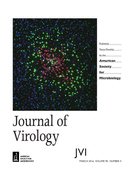- EN - English
- CN - 中文
Transient Transfection-based Fusion Assay for Viral Proteins
基于瞬时转染的病毒蛋白融合分析法
发布: 2017年03月05日第7卷第5期 DOI: 10.21769/BioProtoc.2162 浏览次数: 11496
评审: Yannick DebingMarielle CavroisBalasubramanian Venkatakrishnan
Abstract
Membrane fusion is vital for entry of enveloped viruses into host cells as well as for direct viral cell-to-cell spread. To understand the fusion mechanism in more detail, we use an infection free system whereby fusion can be induced by a minimal set of the alphaherpesvirus pseudorabies virus (PrV) glycoproteins gB, gH and gL. Here, we describe an optimized protocol of a transient transfection based fusion assay to quantify cell-cell fusion induced by the PrV glycoproteins.
Keywords: Herpesvirus (疱疹病毒)Background
Membrane fusion is essential for entry and spread of enveloped viruses. Many enveloped viruses require only one or two viral proteins to mediate attachment to host cells and membrane fusion, and the molecular mechanisms are well understood (Harrison, 2015). In contrast, herpesviruses use a more complex mechanism requiring a receptor-binding protein and the core fusion machinery composed of gB and the heterodimeric gH/gL complex for infectious entry. The mechanism leading to fusion of herpesvirus envelopes with cellular membranes is only incompletely understood. Detailed knowledge of the molecular basis of herpesvirus entry and spread is important for efficient countermeasures against a variety of diseases. A better understanding is aided by studying the cell fusion activity of cells transiently expressing the relevant proteins. Different model systems, whereby fusion is induced with a minimal set of the core fusion machinery represented by glycoproteins gB and gH/gL and receptor-binding gD, in the absence of infection, have been developed, for example, for herpes simplex viruses type 1 and 2 (HSV-1 and 2 [Turner et al., 1998; Muggeridge, 2000; McShane and Longnecker, 2005]). Unlike HSV-1 and 2, PrV does not require signaling of gD for membrane fusion during direct cell-to-cell spread, reducing the number of relevant proteins to three (Schmidt et al., 1997). These systems are also used to quantify membrane fusion. However, the evaluation or quantitation of fusion activity, which is often based on counting the number of nuclei of a formed syncytium, is very time consuming. Our incentive to develop the present protocol was to improve the current protocol to facilitate and accelerate evaluation, and make results more robust and comparable by combining important factors like size and number of formed syncytia. Here, we describe an optimized protocol for an in vitro transient transfection based cell-cell fusion assay to quantify membrane fusion induced by the PrV glycoproteins gB and gH/gL (Schröter et al., 2015). However, we know that this assay also is functional with other fusion-active glycoproteins, not just those of pseudorabies virus.
Materials and Reagents
- 1.5 ml tubes (e.g., Fisher Scientific, catalog number: S348903 )
- 24-well cell culture plate (e.g., Corning, Costar®, catalog number: 3527 )
- Pipette tips 10 µl (TipOne) (STARLAB INTERNATIONAL, catalog number: S1110-3000 )
- Pipette tips 1 ml (Greiner Bio One International, catalog number: 740290 )
- Pipette tips 100 µl (Greiner Bio One International, catalog number: 739290 )
- pcDNA3 (Thermo Fisher Scientific, Invitrogen)
Note: pcDNA3 from Invitrogen is no longer available. Alternatively, pcDNA3.1(+) (Thermo Fisher Scientific, catalog number: V79020 ) can be used. - Rabbit kidney (RK13) cells (Collection of Cell Lines in Veterinary Medicine-RIE 109)
- MEM Eagle (Hank’s salts and L-glutamine) (Sigma-Aldrich, catalog number: M4642 )
- MEM (Earle’s salts) (Thermo Fisher Scientific, catalog number: 61100061 )
- Sodium bicarbonate (NaHCO3) (Carl Roth, catalog number: 6885.1 )
- NEA (nonessential amino acids) (Biochrom, catalog number: K 0293 )
- Na-pyruvate (EMD Millipore, catalog number: 106619 )
- Tris-HCl (pH 8.5)
- Fetal bovine serum (FBS) (Biowest, catalog number: S181G )
- Lipofectamine® 2000 reagent (Thermo Fisher Scientific, catalog number: 11668027 )
- Opti-MEM® reduced serum medium (Thermo Fisher Scientific, catalog number: 31985062 )
- Sodium chloride (NaCl) (Carl Roth, catalog number: 9265.1 )
- Potassium chloride (KCl) (Carl Roth, catalog number: 5346.1 )
- Dextrose (Sigma-Aldrich, catalog number: D9434 )
- Trypsin (1:250) powder (Thermo Fisher Scientific, catalog number: 27250018 )
- Ethylenediaminetetraacetic acid (EDTA) (SERVA Electrophoresis, catalog number: 11280.01 )
- Paraformaldehyde (Carl Roth, catalog number: 0335.1 )
- 10% growth media (see Recipes)
- 3% paraformaldehyde (see Recipes)
- 10 mM Tris HCl (pH 8.5) (see Recipes)
- Alsever’s-Trypsin Versen (ATV-) solution (see Recipes)
Note: Solutions and media #6, 11, 14, 15, 16, 21, 22, 23, 24 and 26 should be kept at 4 °C.
Equipment
- T75 flask (e.g., Corning, catalog number: 430725U )
- Incubator (e.g., Panasonic, Sanyo, model: MCO-19AIC or Fisher Scientific, catalog number: 12826756 )
- Fluorescence microscope (e.g., Nikon Instruments, model: Eclipse Ti-S)
- Super high pressure mercury lamp power supply (e.g., Nikon Instruments, model: C-SCH1 )
- Light source (e.g., Nikon Instruments, model: LH-M100C-1 )
- Vortexer (e.g., Fisher Scientific, catalog number: S96461A )
- Laminar flow hood (Thermo Fisher Scientific, Thermo ScientificTM, model: Safe 2020 Class II , catalog number: 51026637)
- Centrifuges for 1.5 ml tubes (e.g., Eppendorf, model: 5415 D )
- Pipette controller (e.g., pipetboy acu 2, VWR, catalog number: 37001-856 )
- Nanophotometer (e.g., VWR, IMPLEN, model: P330, catalog number: CA11027-294 )
Software
- Computer running software NIS-Elements V 4.00.01 (Nikon, Düsseldorf, Germany)
Procedure
文章信息
版权信息
© 2017 The Authors; exclusive licensee Bio-protocol LLC.
如何引用
Vallbracht, M., Schröter, C., Klupp, B. G. and Mettenleiter, T. C. (2017). Transient Transfection-based Fusion Assay for Viral Proteins. Bio-protocol 7(5): e2162. DOI: 10.21769/BioProtoc.2162.
分类
微生物学 > 微生物-宿主相互作用 > 病毒
微生物学 > 微生物-宿主相互作用 > 体外实验模型
生物化学 > 脂质 > 脂质结合
您对这篇实验方法有问题吗?
在此处发布您的问题,我们将邀请本文作者来回答。同时,我们会将您的问题发布到Bio-protocol Exchange,以便寻求社区成员的帮助。
提问指南
+ 问题描述
写下详细的问题描述,包括所有有助于他人回答您问题的信息(例如实验过程、条件和相关图像等)。
Share
Bluesky
X
Copy link













